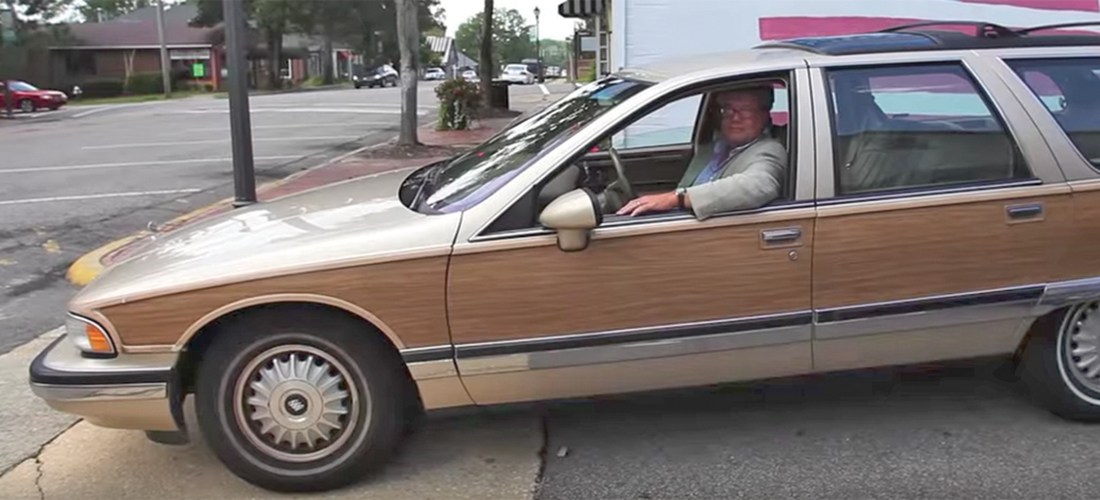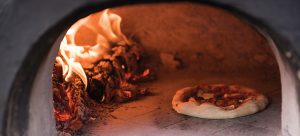
Old No. 7
Two aging road warriors strike out in search of the American past
By Jim Dodson
As summer’s end approached, I hit the road for research on a new book, though I wasn’t sure how far I might get — or where I might end up.
The start of any book project brings with it a humbling sense of vertigo, a feeling that the road ahead will be challenging and possibly full of wrong turns and maddening dead ends. But this particular project held special meaning because it’s a book I’ve been thinking about, in one form or another, for almost 40 years.
It’s a book about a road.
But not just any road — the Great Wagon Road.
You may or may not have heard of it. But if you happen to be a Southerner with deep roots in the region, you may well be here because of it.
The Great Philadelphia Wagon Road, as it was called early on, became the most traveled road in Colonial America. It ran from Philadelphia to Augusta, Georgia, and was the road that opened the American South to exploration and settlement and pushed back the western frontier.
During the 18th and early 19th centuries, the road was the way to a new life for tens of thousands of Scots-Irish, German and English settlers — Amish, Moravians, Quakers and Presbyterians — who landed on our shores seeking a fresh start in a new world. Daniel Boone hunted along the road, and Thomas Jefferson’s daddy named and surveyed it. A young captain named George Washington served as an Indian scout along the GWR and no less than three major wars, the French and Indian, American Revolution and Civil War — four if you care to count the Whiskey Rebellion — were fought along it’s meandering way. Fittingly, the ingenious Conestoga wagon that carried later generations of settlers across the Great Plains to settle the Far West was created by German artisans by the Conestoga River near Lancaster, Pennsylvania.
Both wings of my family came down the GWR in the mid-18th and early 19th centuries respectively. My pretty blond mama’s sprawling German clan (the Kessells), hopped off around Hagerstown, Maryland and settled along the south branch of the Potomac River on the West Virginia side in the early 1800s. Half a century earlier, my daddy’s Scottish and English forebears (the Tates and the Dodsons ) filtered down the road over the Dan River through Walnut Cove before settling in the Hawfields near Mebane, where they formed churches and grist mills and made furniture. A few of them even went on down to Wilmington and the Cape Fear region.
I first heard about the Great Wagon Road four decades ago when a pretty girl named Rebecca Robinson and I stayed out all night on a date and wound up attending the sunrise service at God’s Acre in Old Salem. The Moravians originated the service in 1732 in Saxony. While standing among the ancient gravestones of that famous Moravian — men separated from women, a democracy of death, as has been described — we struck up a conversation with an older gent who turned out to be a professor of history at nearby Salem College. When I happened to mention my family name, he smiled and commented that my forbears, like his, probably “came down the Great Wagon Road about the same time” in the late 1700s.
He explained that the GWR subsumed the remains of the so-called Great Indian Warrior Trading Path used by the Iroquois tribes such as the Cherokee, and other nations, including the Catawba and Tuscarora Indians until the Treaty of Lancaster in 1744 opened the western frontier to European settlement, pushing the native peoples farther into the mountains.
Cities such as Lancaster and York in Pennsylvania; Winchester, Roanoke and Lexington in Virginia; (Winston-)Salem, Salisbury, and Charlotte in North Carolina, and Camden in South Carolina, began either as trading post river fords or market towns that owe their origins directly to the Great Wagon Road.
Thirty-five years after that sunrise service, during the year I served as the Writer in Residence at Hollins University (which happened to lie along the GWR in a vale just north called “Big Lick,” now Roanoke), my fascination with the road was powerfully rekindled. I began moseying along Virginia’s winding and beautiful U.S. Route 11 and found all sorts of surviving references to the Great Wagon Road in various forms — place names of inns, family farms, townships, churches, battlefields and no shortage historical roadside standards.
On my trips home to Maine up Interstate 81, I realized that I was, in fact, traveling the same path my forebears had followed once upon a time in America, on the Great Wagon Road.
By the end of my time at Hollins, I’d resolved to someday drive the Great Wagon Road’s 700 miles in order to investigate how a young nation was born and how my native South grew up along what may be the most historic road in the land.
m
Someday finally arrived when I loaded up my own Great Wagon and set off for Philadelphia just after dawn one morning in late July.
My Great Wagon happens to be a vintage 1996 Buick Roadmaster Estate wagon, an iconic American road car that automotive historians consider the last true production American station wagon built before Detroit switched to making SUVs.
Almost on a lark — or was it the sweet hand of Providence? — I bought it a decade ago from a nice lady in Pinehurst whose widowed papa had recently given up driving and had to “let go of his baby.”
Well-maintained Roadmasters, I soon learned, can fetch a tidy sum and are greatly in demand among collectors of vintage automobiles.
This one turned out to be a gem.
Its odometer had only 59,000 miles on it. The lovely fellow who’d owned it actually kept velvet on the dash. The seats were comfy and roomy, like leather La-Z-Boy recliners. It’s famous Dynaride suspension system made the vehicle glide over the road like a dream, and a 350-horsepower V-8 engine was the same one Chevy put in its Corvettes. The air conditioning system could have cooled a deli meat locker and the killer cassette audio system had the acoustics of a concert hall.
True, there were a few tiny dents and peeling paint in its fake wood grain side panels — but hey, there were in mine, too. We were perfect for each other.
I bought the car an hour after driving it.
Our four kids were amused and maybe a little embarrassed when they laid eyes on my newly acquired land yacht that Christmas.
“It’s so, well . . . big,” said one son with a
wary chuckle.
You should give it a nickname,” suggested another, the family comedian. “How about
The Beast?”
I didn’t care for The Beast. The car was nothing if not an iconic work of American automotive art, an aged beauty whose name said it all — Master of the Road.
One ride in it, however, and they all changed their tunes. Three of the four asked to take the car to college. Not on your life, I said, though I did consent to let them drive it whenever they were in residence.
My work colleagues were also amused.
The publisher of this magazine suggested I call her the “Dirty Pearl,” as if my beloved land yacht were an old pirate ship.
That nickname was cute but never seemed quite right to me.
While researching the Roadmaster’s distinguished automotive history — it’s the car that basically helped Buick survive the Great Depression and became the symbol of 1950s suburban America — I discovered a website that listed the Roadmaster Estate wagon among “Top Ten Best Vehicles for the End of the World,” capable of handling “nuclear winter, economic collapse or a zombie takeover.”
My 1996 Roadmaster was No. 7 on the list. The photograph was even identical to my Great Wagon — “The Modern American Power Wagon Exemplar,” noted the editor of Popular Mechanics, in effect the Conestoga Wagon of Vacationing America.
I finally had the perfect nickname.
My Great Wagon, after all, had survived the lives of two large and rambunctious American families, three teen drivers and decades of moving everything from entire households to countless garden shrubs, not to mention made dozens of beach trips and backcountry camping expeditions with a large canoe lashed on her roof. My Great Wagon was nothing if not a proven survivor.
So this summer, after 21 years of life and 159,000 miles, following a tune-up from Clark the mechanic who has faithfully looked after the old gal for years, we set off together up the Great Wagon Road to begin the first leg of our long journey from Market Square in Colonial Philadelphia to Augusta, Georgia.
Old No. 7 handled Philly’s congested tourist traffic like a summer breeze off the Delaware and cruised west on the Lincoln Highway as if she were right off of the showroom floor.
After Philadelphia, where I walked in the footsteps of our founders and boned up on my heroes Jefferson and Franklin, the Old No. 7 led me to an expert on Colonial furniture making and allowed me to dine with a historian of Amish life. Among other things, I dropped by America’s oldest farmer’s market (1745), explored four famous battlefields, hiked in a state park, visited the nation’s first commercial pretzel maker, learned about the birth of the Conestoga wagon and watched the sun rise on Cemetery Hill where Lincoln gave his deeply moving Gettsyburg Address on a November afternoon in 1863. My notebook runneth over.
After five days out, we came home to rest a bit before resuming the next leg of the long road from Winchester to Old Salem later this autumn. The Road’s original travelers sometimes took four or five months to reach their new homes in the Southern Wilderness. Old No. 7 and I hoped to finish our travels in about the same amount of time.
According to her odometer, we covered 179 miles of the Great Wagon Road, which by my reckoning means there are many more miles of great discoveries to come. OH
Contact Editor Jim Dodson at jim@thepilot.com.





